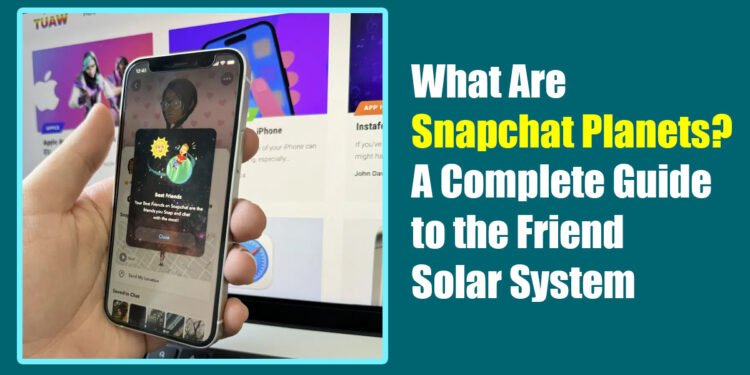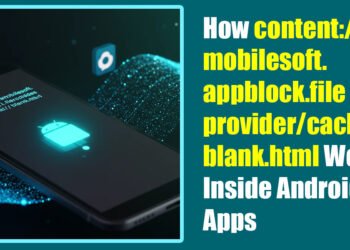Social media thrives on connection, but what if you could see who you’re most connected with? That’s the idea behind Snapchat Planets (also called the Friend Solar System) a visual, playful way Snapchat ranks your closest friends by how much you interact. If you’ve ever wondered what it means to be Mercury in someone’s system, this guide breaks it all down.
You Are the Sun
Snapchat Planets is part of Snapchat+, the premium subscription service. In this system, you are the Sun, and your closest friends orbit around you as planets. The closer a planet is, the stronger the bond, at least according to Snapchat’s algorithm. Only your top 8 friends are displayed as planets, making the ranking both limited and exclusive.
Why Snapchat Created the Solar System
Snapchat already had the “Best Friends” list, but that list was static. Planets bring a visual and gamified twist to friendship rankings. It’s designed to make engagement fun, encourage interaction, and help users see who they connect with most. However, since ranking friends can stir emotions, Snapchat has made the feature optional. By default, it’s turned off for new Snapchat+ users.
How Snapchat Planets Work
Snapchat calculates rankings based on interactions. The more you exchange snaps, chat, and maintain streaks with a friend, the closer they move toward your Sun. If interactions slow down, friends drift outward to more distant planets. Importantly, your solar system is private. Only you see your arrangement. A friend will only see their position when they tap on your profile badge.
The Planets Explained
The system mirrors our real solar system, from Mercury to Neptune. Each planet corresponds to a rank in your top 8 friends:
- Mercury (#1): Closest friend, the person you interact with most. Visualized with bright colors and hearts.
- Venus (#2): Second-closest, another high-frequency interaction friend.
- Earth (#3): Stable, consistent connection, often with a moon graphic.
- Mars (#4): Fun and energetic, with stars or bold visuals.
- Jupiter (#5): Still close, but less intense than the first four.
- Saturn (#6): Occasional, casual interactions, often represented with rings.
- Uranus (#7): Minimal interaction, still within the top 8.
- Neptune (#8): Farthest friend, rarely in contact but still ranked.
This cosmic structure makes your friendships both visual and symbolic.
How to Enable and Check Planets
If you want to use Snapchat Planets, you need to subscribe to Snapchat+. Once subscribed:
- Open your profile and go to Snapchat+ settings.
- Toggle the Friend Solar System feature on.
- To check your rank in a friend’s system, open their profile, tap the Friends or Best Friends badge, and your planet will appear.
If you don’t see anything, either the feature isn’t enabled, or one of you doesn’t have Snapchat+.
The Benefits of Snapchat Planets
Snapchat Planets adds a new dimension to digital friendships. It provides clarity about who you interact with most and offers a fun, gamified way to visualize connections. It can motivate users to stay in touch, keep streaks alive, and engage more meaningfully. The personalization is a step beyond the older best friend emoji system, making it feel more interactive.
Downsides and Criticisms
While fun, Planets can also create stress. Being ranked lower in someone’s system may feel discouraging. Only 8 friends appear, which means close friends outside that group are excluded. Because the rankings shift with usage, they can change quickly and unpredictably, leading to anxiety for some users. The feature is also locked behind a subscription, limiting access. Due to these concerns, Snapchat chose to keep it off by default for new users.
Tips to Move Up in the Solar System
If you want to shift closer to the Sun in someone’s system, consistency matters. Regular snaps, meaningful chats, and maintaining streaks will help. Focus on genuine interaction rather than spamming messages. Since the algorithm is dynamic, small but steady engagement is more effective than bursts of activity.
Final Thoughts
Snapchat Planets adds a playful, symbolic way to look at friendships. It’s not a perfect reflection of real-life bonds, but it can be a fun reminder of who you connect with most on the app. For some, it’s motivational and insightful; for others, it may spark anxiety. Ultimately, it’s best viewed as a lighthearted feature rather than a measure of true friendship. Whether you’re Mercury or Neptune, remember that relationships go far beyond an app’s algorithm.
FAQs
Do Snapchat Planets affect Snap streaks?
No, the planets don’t interfere with streaks. They simply reflect your interaction ranking with a friend.
Can I turn off Snapchat Planets?
Yes, you can disable the feature in Snapchat+ settings. If it feels overwhelming, it’s completely optional.
Do both friends need Snapchat+ to see planets?
Not necessarily. You’ll see your planet in their system if they have Snapchat+ enabled, even if you don’t.
Why did my planet change suddenly?
Friendship planets shift when your interaction levels change. Fewer snaps and chats can move you outward.
Is the solar system visible to everyone?
No, it’s private. Only you see your solar system, and your friends only see their specific planet with you.










